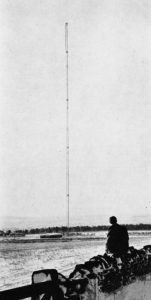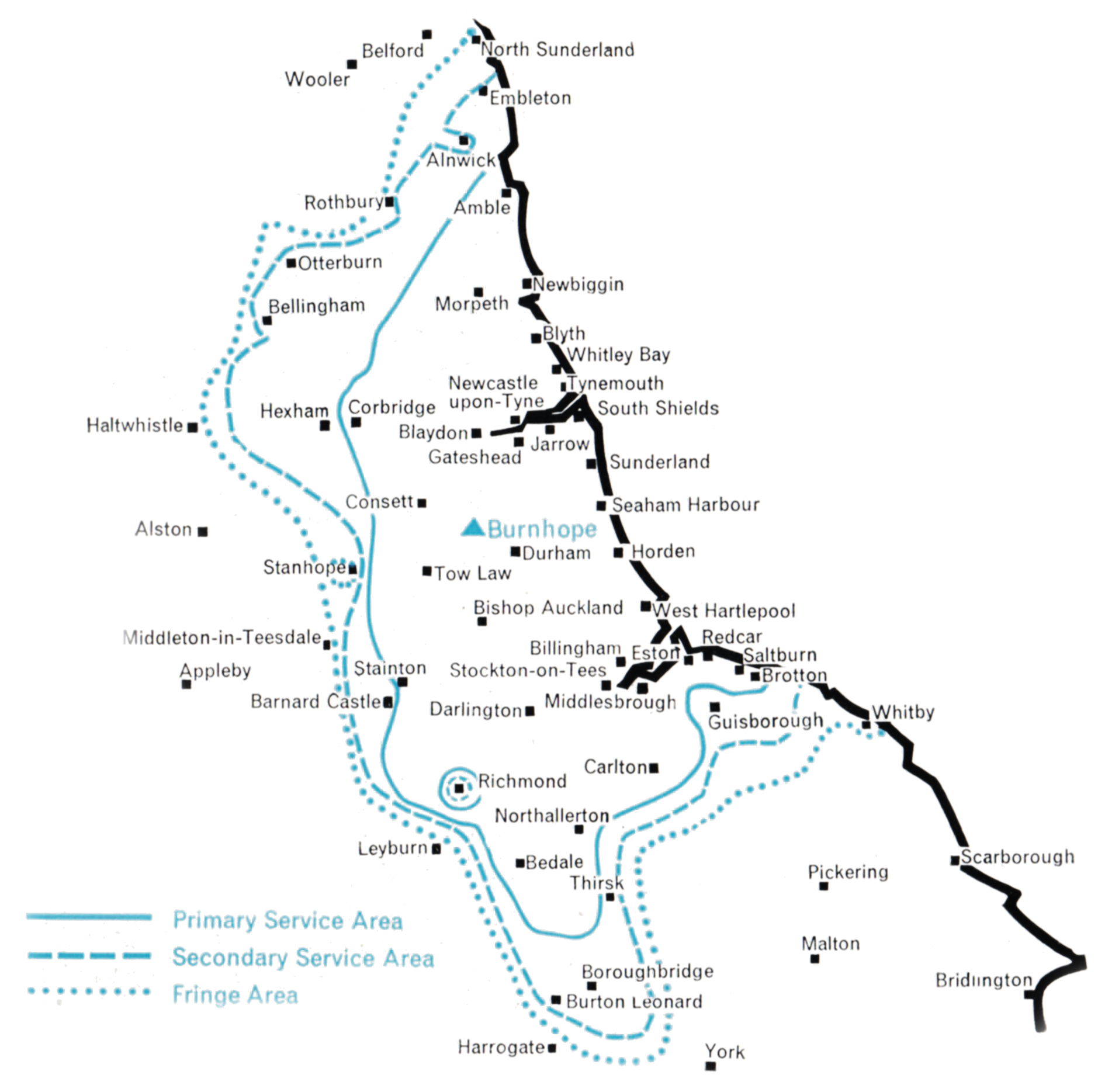- Population within measured contours: Primary 2.48 mn, Secondary 0.19 mn, Fringe 0.05 mn. Total 2.72 mn.
- Channel: Band III Channel 8 (horizontally polarised)
- Vision Carrier Frequency: Nominal 189.75 Mc/s. Actual 189.75675 Mc/s
- Sound Carrier Frequency: Nominal 186.25 Mc/s. Actual 186.27 Mc/s
- Effective Radiated Power: Vision 100 kw maximum. Sound 25 kw maximum.
- Power of Transmitters: Vision (peak white) 4 kW. Sound (carrier) 1 kW
- Heights above sea level: Site 800 ft. Mean aerial 1,500 ft.
- Location: 1° 42′ 50″ W, 54° 49′ 25″ N.
Burnhope (Channel 8)
Company: Tyne Tees Television
The important highly-populated industrial and agricultural area of North-East England, between the eastern slopes of the Pennine Chain and the sea, lies beyond the range of the Emley Moor transmitter in Yorkshire. Another station was therefore needed to provide an Independent Television service for this area.
 A high site was found at Burnhope, about ten miles south-west of Newcastle-upon-Tyne, the major city in the area. It was within a few miles of the existing Band I station at Pontop Pike. Finding a site presented no special difficulty except the importance of avoiding land liable to mining subsidence, which abounds in this locality. This was responsible for some delay while the records were searched and test bores made.
A high site was found at Burnhope, about ten miles south-west of Newcastle-upon-Tyne, the major city in the area. It was within a few miles of the existing Band I station at Pontop Pike. Finding a site presented no special difficulty except the importance of avoiding land liable to mining subsidence, which abounds in this locality. This was responsible for some delay while the records were searched and test bores made.
A mast 750 feet in height was needed to prevent “shadowing” in the rather hilly country and the maximum power of 100 kW which could be permitted on this channel was radiated in both the northerly and the southerly directions, so as to extend the service as far as possible. To the west the service is naturally blocked by the high barrier of the Pennine Chain and to the east its usefulness is limited by the North Sea. The power radiated in these directions was therefore limited to 20 kW and 7o kW respectively, no higher power being necessary. Again a special aerial had to be developed to give the required directional effect.
The station went into programme service on 15th January 1959 and has fulfilled its predicted performance.

